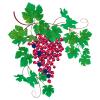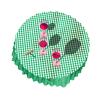Health Research
How much red wine is good for your heart?
September 24, 2019
Share

Credit Gary Neill
Researcher Adrian Baranchuk was enjoying the last glass of red wine after dinner in a nice restaurant with five fellow cardiologists when he casually asked a simple question: “If you have a patient who drinks two glasses of red wine a day, but questions how much is actually ‘healthy,’ would you say that is a good amount for their health?”
Each one gave a different opinion.
“Yes,” said the first, “the patient can continue drinking since wine is good for his or her heart health.” The second disagreed, saying, “Are you crazy? Any amount of alcohol is bad for your health! I would recommend total abstinence!”
The third countered by touting the benefits of polyphenols, bioactive compounds in red wine investigated for their apparent anti-oxidant and anti-inflammatory effects. He also recommended two glasses a day for men and one glass for women, but with abstinence from alcohol two days a week. The fourth said: “I don’t recommend anything related to alcohol intake to my patients as there is no consistent evidence for or against. There are no universal guidelines as far as I know.”
After hearing such divergent opinions, Baranchuk concluded, “we need to study this further.”
So, he did.

Credit Gary Neill
Glaring gap in wine-heart knowledge
Baranchuk, professor of medicine in the Division of Cardiology at Queen’s, searched for evidence-based, international recommendations on alcohol consumption for patients in relation to heart health. The best ones he could find were provided by the American Heart Association (AHA) – but some digging revealed the advice was issued on shaky ground. “The references for the recommendations were extremely weak and old, ending in the early 90s,” explains Baranchuk, who is also a member of the Heart Rhythm Service at Kingston Health Sciences Centre, president of the International Society of Electrocardiology and editor-in-chief of the Journal of Electrocardiology.
He saw a need and opportunity to address the glaring gap in expert knowledge about a widely consumed substance that is an important part of social and daily life for many patients. “Cardiologists can all agree on the benefits of regular exercise and a Mediterranean diet for the heart, and the harmful effects of tobacco,” says Baranchuk. “How can we be in such disagreement about something almost all patients are exposed to?”

Dr. Baranchuk with internal medicine resident Bryce Alexander and life sciences student Sohaib Haseeb.
Weighing wine’s pros and cons
Baranchuk and two students in his lab – life sciences student Sohaib Haseeb and internal medicine resident Bryce Alexander – conducted a comprehensive, in-depth review of 100 relevant studies and guidelines on wine and cardiovascular health from the early 1980s until today. The review was published in Circulation, the AHA’s high-impact journal, in October 2017 with Haseeb as first author. “Our goal was to provide a single, in-depth review that covers the evidence of the pros and cons of wine consumption on heart health in an objective, balanced way,” says Baranchuk.
Their research identified many epidemiological and experimental studies that found light to moderate drinking of red wine protects heart health. Red wine contains over 500 chemical substances, including “polyphenols,” which contribute to heart health in various ways. The review describes specific mechanisms of action through which the chemical components of red wine, particularly certain types of polyphenols, reduce heart disease risk. “The evidence suggests that polyphenols reduce low-density lipoprotein or bad cholesterol, help platelets function better, decrease inflammation, increase insulin sensitivity, improve blood pressure and slow down atherosclerosis,” explains Baranchuk.
Cardioprotective compounds in red wine
Baranchuk’s Circulation review identified some key chemical components of red wine that studies suggest are good for the heart, with light to moderate consumption. Polyphenols are a class of compounds found in plant foods, including grapes, that have antioxidant properties. Red wine is 10 times higher in polyphenol concentration than white wine, a key reason why many more researchers have investigated the cardioprotective effects of reds than whites.
Quercetin, a plant polyphenol from the flavonoid group, is prominent in red wine and has protective effects against hypertension, inflammation and blood clots. It also prevents oxidation of LDL, a (bad) cholesterol, which contributes to the hardening of arteries.

Credit Gary Neill

Credit Gary Neill
Resveratrol is a non-flavonoid polyphenol in wine that comes from the skin of grapes. Because red wine is fermented with grape skins longer than white wine, it has a higher concentration of resveratrol. “Studies suggest resveratrol may have protective effects against hypertension, atherosclerosis, stroke, heart attack and heart failure. It’s believed to work by reducing oxidative stress, removing clots, inhibiting platelet clumping and improving insulin sensitivity,” says Baranchuk.
Crossing the benefit/harm threshold
Because so much attention has been given to red wine’s cardioprotective benefits, it has gained a reputation as a “healthy” alcohol. If one or two glasses every day are good for your heart, there’s a danger that marketers and consumers can leap to an assumption that three, four or more glasses are as good or even better.
Drinking too much wine, however, increases the risk of arrhythmias, heart attacks, sudden cardiac death, liver cirrhosis, pancreatitis, and cancer, as well as impaired judgement and violent behaviour. “Once you cross the threshold of a safe amount to drink, the harmful effects of consuming wine or other types of alcohol override the benefits. The things you’re doing to help your heart produce exactly the opposite effect if you cross that threshold,” he says.
Baranchuk believes that cardiologists need to reach an evidence-based consensus on the amount or dose of wine that’s healthy and the dose that’s not, so they can provide clear recommendations to patients on both benefits and harms. The Circulation paper identified one key challenge that needs to be overcome to do this: “The definition of ‘one standard drink’ used in each guideline varies remarkably by country. This causes great confusion,” says Baranchuk, noting that the size of a standard glass of wine can range from four to eight ounces, for example.
"Once you cross the threshold of a safe amount to drink, the harmful effects of consuming wine or other types of alcohol override the benefits. The things you’re doing to help your heart produce exactly the opposite effect if you cross that threshold."
– Dr. Adrian Baranchuk

Credit Gary Neill
Cultivating a heart-healthy Malbec
Adrian Baranchuk is also doing research to develop and test red wines specially cultivated to provide more heart-health benefits per glass. He’s collaborating with Marcelo Pelleriti, a leading winemaker in Argentina, on a project to produce a Malbec wine enriched with polyphenols.
“If you offer less water to the plants and have strict control of the humidity and soil conditions, the plants will go into survival mode and the grapes will produce a higher concentration of polyphenols,” says Baranchuk. Eventually, he would like to do studies with patients to compare the cardioprotective effects of enriched red wine vs. regular red wine by measuring changes in heart-health markers (like good and bad cholesterol levels) through blood tests.
Seeking international consensus
Baranchuk is now surveying the opinions and recommendations of cardiologists, internal medicine specialists and general physicians in Argentina, Uruguay, Mexico, Japan and Canada as a first step towards creating consistent, widely-accepted international guidelines on alcohol consumption and cardiovascular health for health care professionals and patients. “Our goal is to harmonize alcohol consumption guidelines at the highest level and provide clear answers about what cardiologists should recommend,” he says.
While a group of cardiologists may disagree while sharing a bottle of vino, Baranchuk’s deep dive into the pro and cons of wine consumption after their conversation points to a simple, common-sense prescription. Wine is justifiably popular for its taste and varied flavours, as a social drink to help people relax, and for its heart-healthy benefits if you enjoy just a glass or two.



